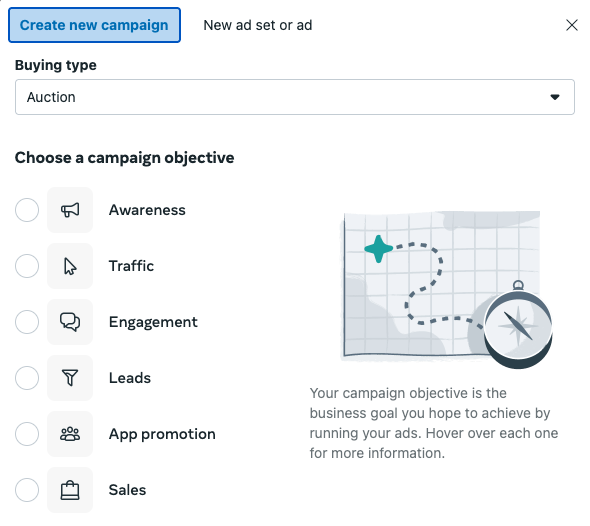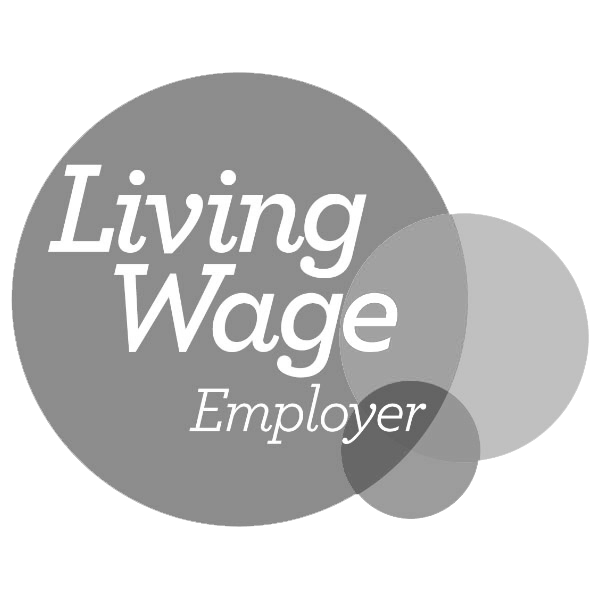Level Up Your Facebook Ads with these 5 Tips!
So, you’ve got an incredible eCommerce business. Whether you’re an experienced entrepreneur or just starting out, you understand the importance of attracting more customers online. And you’re not alone – over the past few years many businesses have come to appreciate the potential of online sales. But how do you get those potential customers to notice you?
With over 37 million active Facebook users in the UK, it’s clear they’re out there. But how do you reach them? (Hint: it’s not by throwing your budget at a poorly planned Facebook ad campaign and hoping for the best.)
Don’t worry, we’re here to help you figure it out. In this blog, we’ll ditch the guesswork and explore the world of Meta ads. We’ll share our top 5 tips that we’ve learned from managing thousands of successful campaigns.
But first, Do Meta Ads even WORK for eCommerce businesses?
Absolutely! Meta ads can significantly impact eCommerce businesses when executed properly. Here’s why:
- Massive Reach: With billions of users globally, Meta provides access to an enormous potential customer base.
- Targeting: Utilising Meta Pixel and the Conversions API, along with manual targeting, allows for precise audience segmentation based on demographics, interests, behaviors, and even purchase history.
- Diverse Ad Formats: Meta offers a variety of ad formats to choose from including eye-catching image ads, engaging video ads, and interactive carousel ads that display multiple products.
- Measurable Results: You can track your ad performance, analyse data, and optimise your campaigns for best return on investment (ROI).
- Brand Building: Meta ads are not solely focused on immediate sales either; they also enhance brand awareness, build relationships with potential customers, and help to create a loyal following.
However, it’s important to note that Meta ads are not a quick-fix solution. A solid strategy, compelling creatives, and a thorough understanding of your target audience are essential for achieving meaningful results.
And when you get it right? The results can be amazing! Research indicates that businesses effectively using Meta ads have experienced:
- Significant increases in website traffic and sales: Some have reported doubling or even tripling their online sales after launching a well-planned Meta ad campaign.
- Improved return on ad spend (ROAS): With careful targeting and optimisation, you can achieve a strong ROAS and get the most out of your ad budget.
- Increased brand awareness and customer engagement: Meta ads can help you connect with new audiences and build relationships with potential customers.
Continue reading to uncover our top tips for unlocking the potential of Meta ads for your eCommerce business.
1. Set Your Goals
Before you dive headfirst into the world of Meta ads, take a moment to think about what you really want to achieve. Are you trying to boost brand awareness, drive traffic to your website, generate leads, or increase sales?
Meta currently offers 6 different campaign objectives:
- Awareness: Reach a wider audience and increase brand visibility.
- Traffic: Increase the number of visitors to your website or landing page.
- Engagement: Encourage likes, comments, shares, and other interactions with your content.
- Leads: Collect contact information from potential customers.
- App Promotion: Encourage more people to download and use your app.
- Sales: Drive conversions and improve your revenue.

After identing your main goal, choose the appropriate campaign objective in Meta Ads Manager. This tells Meta’s algorithm what you want to achieve, so it can optimise your campaign accordingly.
Keep in mind Meta’s algorithm functions like a helpful but slightly clueless assistant. You need to provide clear, straightforward instructions. The more specific you are, the better the results you’ll get.
2. Ditch the Rubbish Creatives
You can’t scale with low-quality creatives or products. Invest in high-quality images and videos that present your products in the best possible way. And don’t be afraid to experiment with different formats and styles. Try something silly or use unexpected visual hooks to grab attention.
We’ve noticed that video ads tend to outperform static ones. As a service provider, educating your target market can be a powerful way to establish your expertise and attract clients.
When it comes to making first impressions, time is of the essence. Some studies indicate that Gen Z prefers to digest information in posts within a maximum of 15 seconds.
That being said, one of the best things you can do for your campaigns is to use an engaging ad format to convey your message in a way that captures attention and drives action.
No matter which ad format you choose, your creative assets – images, videos, and copy – should be tailored and engaging. Here’s how to make your ads stand out:
- Experiment with video content: Videos often outperform static images in engagement. Short, impactful videos under 15 seconds focusing on product highlights or customer testimonials can capture attention quickly.
- Test bold visuals: For static ads, bold, contrasting colors, and minimalistic designs can grab attention and stand out in busy feeds.
- Personalisation is crucial: Ad types like Meta Advantage+ catalog ads that adjust to your audience’s preferences can make your ads feel tailored, enhancing relevance and boosting conversion rates.
3. Nail Your Tracking with the Meta Pixel and Conversions API
This is one of the most important tips in this blog. Installing the Meta Pixel on your website is an absolute no-brainer. The Meta Pixel and Conversions API are powerful tools for gaining insights into your ad performance.
These tools gather valuable information about what happens after someone interacts with your ad. They monitor aspects such as:
- Website visits: Which pages are people visiting? How long are they staying on your site?
- Product views: Which products are catching their eye?
- Add to carts: Are people adding items to their cart but not completing the purchase?
- Purchases: How many users are purchasing?
But here’s the catch: the effectiveness of these tools depends on how well you set them up. Take the time to learn how to use these tools properly and ensure they’re tracking the right events. Reliable data is the foundation of any successful Meta ad campaign.
Setting up the Meta Pixel and Conversions API isn’t as complicated as it may seem. Meta has tons of resources to help you through the process, and there are numerous helpful tutorials online.
4. Spy on Your Competitors (Ethically, of Course!)
The Facebook Ad Library is an invaluable free tool that provides insights into what’s working (and what’s not) in your niche. It’s essentially a searchable database of all active ad running on Facebook and Instagram, making it a powerful resource for any marketer.
Here’s how to use it for the best results:
- Analyse Direct Competitors: Start by looking at the ads of businesses that directly compete with you. What products are they promoting? What offers are they highlighting? What kind of visuals and messaging are they using? Take note of what appears to resonate with their audience and look for opportunities to differentiate yourself.
- Study Industry Leaders: Don’t just focus on your immediate competitors. Take a look at the ads of the major players in your industry. How are they using Meta ads to build brand awareness, launch new products, or engage with customers? Even if they are significantly larger than your business, you can still extract valuable insights from their strategies.
- Spot Emerging Trends: The Ad Library can help you identify emerging trends in your industry. Are you seeing a lot of video ads? Are brands using more user-generated content? Are there any new ad formats that are gaining popularity? Staying on top of these trends can help you keep your own campaigns fresh and effective.
- Deconstruct Winning Creatives: Analyse the specific elements of successful ads. How are they using headlines, descriptions, and calls to action? What kind of tone and voice are they using? Are they using images, videos, carousels, or collections? Pay attention to what’s grabbing attention and driving results.
- Infer Targeting Strategies: While you can’t see the exact targeting criteria, you can often deduce who brands are trying to reach based on their ad copy, visuals, and overall message. This can often provide clues about potential audience segments you might be missing.
Remember, the goal isn’t to simply copy what others are doing. It’s to gather insights, identify best practices, and use that information to develop your own unique and effective Meta ad strategy.
5. Don’t Overthink Your Targeting
It’s completely understandable to want to control every single aspect of your Meta ad campaigns. You might think, “If I just narrow my audience down to this super-specific set of interests, I’ll only reach my ideal customers and save money!”
The reality? That’s often a recipe for disaster. 😬
Here’s why micro-managing your targeting can backfire:
- Limited Reach = Higher Costs: When you make your audience too narrow, you’re competing for a smaller group of people. This increases competition and drives up your ad costs. Meta’s algorithm needs a certain amount of data and flexibility to find the best people to show your ads to. Restricting it too much hinders its ability to do its job effectively.
- You Might Be Missing Out: You might have preconceived notions about who your ideal customer is, but you could be wrong! By using broader targeting, you allow Meta’s algorithm to explore and discover potential customers you might not have considered.
- The Algorithm Knows Best (Sometimes): Meta’s algorithm is highly advanced. It analyses extensive data to identify patterns and predict who is most likely to take the desired action (like making a purchase). By giving it more freedom, you allow it to learn and optimise your campaigns for improved results.
So, what should you do instead?
- Start Broad: Begin with broader targeting options based on demographics, general interests, or behaviors that are relevant to your products.
- Layer (But Don’t Stack): You can certainly use layers of targeting, but avoid “stacking” interests in a way that creates an overly restrictive audience.
- Let Lookalike Audiences Work: If you have sufficient data, lookalike audiences can be a powerful way to expand your reach. These audiences are created by Meta to target people who share similar characteristics with your existing customers.
- Monitor and Refine: Keep a close eye on your ad performance and make adjustments as needed. If you’re seeing good results with a broader audience, don’t be afraid to stick with it
Bonus Tip: Always remember to test! The best way to find out what works for your business is to experiment. Test different targeting options, ad creatives, and bidding strategies to see what resonates with your audience and drives the best results. Don’t be afraid to try new things and learn from your data.
Mastering Meta ads for eCommerce combines a strategic approach with a thorough understanding of both your audience and the platform. By following these five tips, you can move beyond simply “running ads” and start creating campaigns that drive results for your business. The world of digital marketing is constantly evolving, so continuous experimentation and optimisation are key to long-term success.
Don’t have the time to dedicate to running ads yourself? That’s where we come in! At Jigsaw, our team of experienced digital marketing experts are ready to help you develop and execute successful Meta ad campaigns that drive real results for your eCommerce business.


